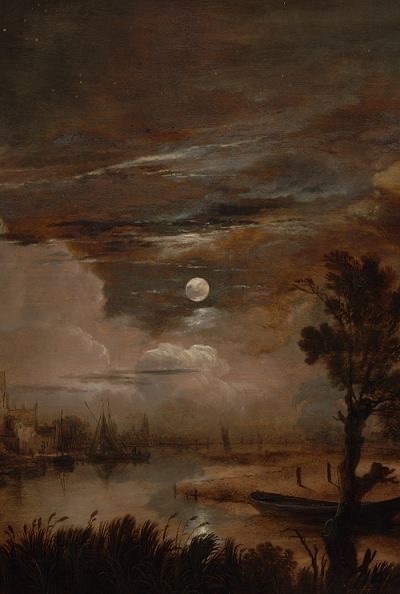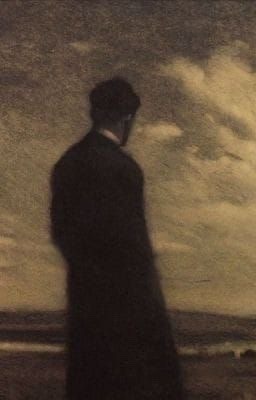“I Wish You To Know




“I wish you to know
that you have been the last dream of my soul.”
—Charles Dickens, A Tale of Two Cities
More Posts from Ancientpansy and Others

The painting "Lady in a Fur Cloak" is a work of art that has generated much debate over its authorship over the years. Initially, it was attributed to the renowned painter El Greco, but recent analyses have confirmed that it was painted by the Spanish artist Alonso Sánchez Coello.
Details of the work:
Title: "Lady in a Fur Cloak"
Artist: Alonso Sanchez Coello (c. 1531-1588)
Data: 1580-1588
Technique: Oil on canvas
Dimensions: 79.8 x 65.7 cm
Location: Pollok House, Glasgow
History and Authorship:
The painting was exhibited at the Louvre in 1838, and was attributed to El Greco at the time. In 1853, it was acquired by Sir William Stirling Maxwell, who donated it to the City of Glasgow in 1967, along with Pollok House.
The authorship of "Lady in a Fur Cloak" has been debated for over a century. Detailed technical analyses, including X-rays and comparison with other works, have revealed that the painting shares stylistic and material characteristics with the works of Alonso Sánchez Coello.
The figure portrayed:
The identity of the woman depicted in the painting is unknown, but her elegance and clothing suggest that she belonged to nobility or royalty. Some scholars have speculated that she could be El Greco's companion Jeronima or even an idealized representation of the Virgin Mary. However, the lack of concrete evidence keeps her identity a mystery.
Painting features:
"Lady in a Fur Cloak" stands out for its realistic representation of the female figure, with meticulous details in her clothing, jewelry and facial expression. The use of warm, dark colors, together with the somber background, gives the work a mysterious and elegant air.
The painting is considered one of the most important of the late 16th century in Europe, and is an example of Alonso Sánchez Coello's ability to portray Spanish nobility with precision and refinement.








Pantheon, Rome -- September 16th, 2024
Etsy

Good Morning from Scotland 🏴
Sunrise over Loch Ard, Kinlochard
📸damianshieldsdotcom/ Damian Shields on Instagram

The Painter's Honeymoon (c.1864) by Frederic Leighton









Ben Barnes as Dorian Gray, 2009










@utopie-sempiternelle

Royal Chapel of Versailles, France.






May 14th 1754 saw the rules of golf formalised at St Andrews with the foundation of the Society of St Andrews Golfers.
Twenty-two ‘Noblemen and Gentlemen’ contributed to a silver club to be played for annually over the Links of St Andrews. The first winner was Baillie William Landale, a St Andrews’ merchant, who became Captain for the year.
The competition was initially open to all golfers, as had been that of the Leith golfers ten years previously. The Leith golfers were specifically invited and brought their rules with them, which the St Andrews’ golfers used, with a small change to Rule 5. Thus began the foremost club in both Scottish golf history and world golf in general.
The first picture shows the hand-written rules of golf, which appear on the first page of the very first minute book of the Society of St Andrews Golfers. You can see that rule five was maybe amended after the initial rules were written down. The second pic is of James and Alexander Macdonald the sons of Sir Alexander Macdonald of Macdonald, a great Highland chieftain with estates on the Isle of Skye, although the pic is from 1749, before date “celebrated” today, I think it interesting as it shows one of the boys wit a golf club, showing that golf was already a well-established pastime in Scotland by this time.
The society later became known as the Royal and Ancient Golf Club of St.Andrews.
I’d like to add about the lat pic of the Macdonald brothers, if you see the one on the right, Alexander, is wearing a kilt, many people would have you believe it it was a Victorian invention, the date of this painting clearly shows that is not the case.

William Morris (1834-1896) Tree of Life
-
 ancientpansy reblogged this · 1 week ago
ancientpansy reblogged this · 1 week ago -
 ancientpansy liked this · 1 week ago
ancientpansy liked this · 1 week ago -
 sylphene liked this · 2 weeks ago
sylphene liked this · 2 weeks ago -
 the-dose-makes-the-poison liked this · 3 weeks ago
the-dose-makes-the-poison liked this · 3 weeks ago -
 maracujasaft liked this · 1 month ago
maracujasaft liked this · 1 month ago -
 an-el-ej liked this · 1 month ago
an-el-ej liked this · 1 month ago -
 love-n-purple reblogged this · 1 month ago
love-n-purple reblogged this · 1 month ago -
 flamingstairway reblogged this · 1 month ago
flamingstairway reblogged this · 1 month ago -
 because-i-lost-it-all reblogged this · 1 month ago
because-i-lost-it-all reblogged this · 1 month ago -
 flamingstairway liked this · 1 month ago
flamingstairway liked this · 1 month ago -
 betw33nw0rlds reblogged this · 1 month ago
betw33nw0rlds reblogged this · 1 month ago -
 presumablystrange liked this · 1 month ago
presumablystrange liked this · 1 month ago -
 atom-heart-mama reblogged this · 1 month ago
atom-heart-mama reblogged this · 1 month ago -
 schwarzebrandung liked this · 1 month ago
schwarzebrandung liked this · 1 month ago -
 schwarzebrandung reblogged this · 1 month ago
schwarzebrandung reblogged this · 1 month ago -
 hagakuremarco liked this · 1 month ago
hagakuremarco liked this · 1 month ago -
 cybershadowmachine2 liked this · 1 month ago
cybershadowmachine2 liked this · 1 month ago -
 svartibaldur liked this · 1 month ago
svartibaldur liked this · 1 month ago -
 angustifolia liked this · 1 month ago
angustifolia liked this · 1 month ago -
 justadamscott liked this · 1 month ago
justadamscott liked this · 1 month ago -
 kokoro-heart reblogged this · 1 month ago
kokoro-heart reblogged this · 1 month ago -
 whiiteniights liked this · 1 month ago
whiiteniights liked this · 1 month ago -
 prosperine reblogged this · 1 month ago
prosperine reblogged this · 1 month ago -
 treperenjesuncaa liked this · 1 month ago
treperenjesuncaa liked this · 1 month ago -
 bury-me-at-breakout-creek liked this · 1 month ago
bury-me-at-breakout-creek liked this · 1 month ago -
 love-n-purple reblogged this · 1 month ago
love-n-purple reblogged this · 1 month ago -
 love-n-purple liked this · 1 month ago
love-n-purple liked this · 1 month ago -
 ruhlare liked this · 1 month ago
ruhlare liked this · 1 month ago -
 today-isnt-the-day liked this · 1 month ago
today-isnt-the-day liked this · 1 month ago -
 katoprofen reblogged this · 1 month ago
katoprofen reblogged this · 1 month ago -
 katoprofen liked this · 1 month ago
katoprofen liked this · 1 month ago -
 seoflez reblogged this · 1 month ago
seoflez reblogged this · 1 month ago -
 yoyojkily liked this · 2 months ago
yoyojkily liked this · 2 months ago -
 nadrahism liked this · 2 months ago
nadrahism liked this · 2 months ago -
 caremsis reblogged this · 2 months ago
caremsis reblogged this · 2 months ago -
 caremsis liked this · 2 months ago
caremsis liked this · 2 months ago -
 max1m0pensanteguardado liked this · 2 months ago
max1m0pensanteguardado liked this · 2 months ago -
 kingofswords reblogged this · 2 months ago
kingofswords reblogged this · 2 months ago -
 saturnovchatito liked this · 3 months ago
saturnovchatito liked this · 3 months ago -
 mystictechnologypositivityf-blog liked this · 3 months ago
mystictechnologypositivityf-blog liked this · 3 months ago -
 gelirgiderbiyolcu liked this · 3 months ago
gelirgiderbiyolcu liked this · 3 months ago -
 luckylluke liked this · 4 months ago
luckylluke liked this · 4 months ago -
 because-i-lost-it-all reblogged this · 4 months ago
because-i-lost-it-all reblogged this · 4 months ago -
 guarire-me reblogged this · 5 months ago
guarire-me reblogged this · 5 months ago -
 mrnoontide reblogged this · 6 months ago
mrnoontide reblogged this · 6 months ago
Old things are always in good repute, present things in disfavor. Tacitus
3 posts